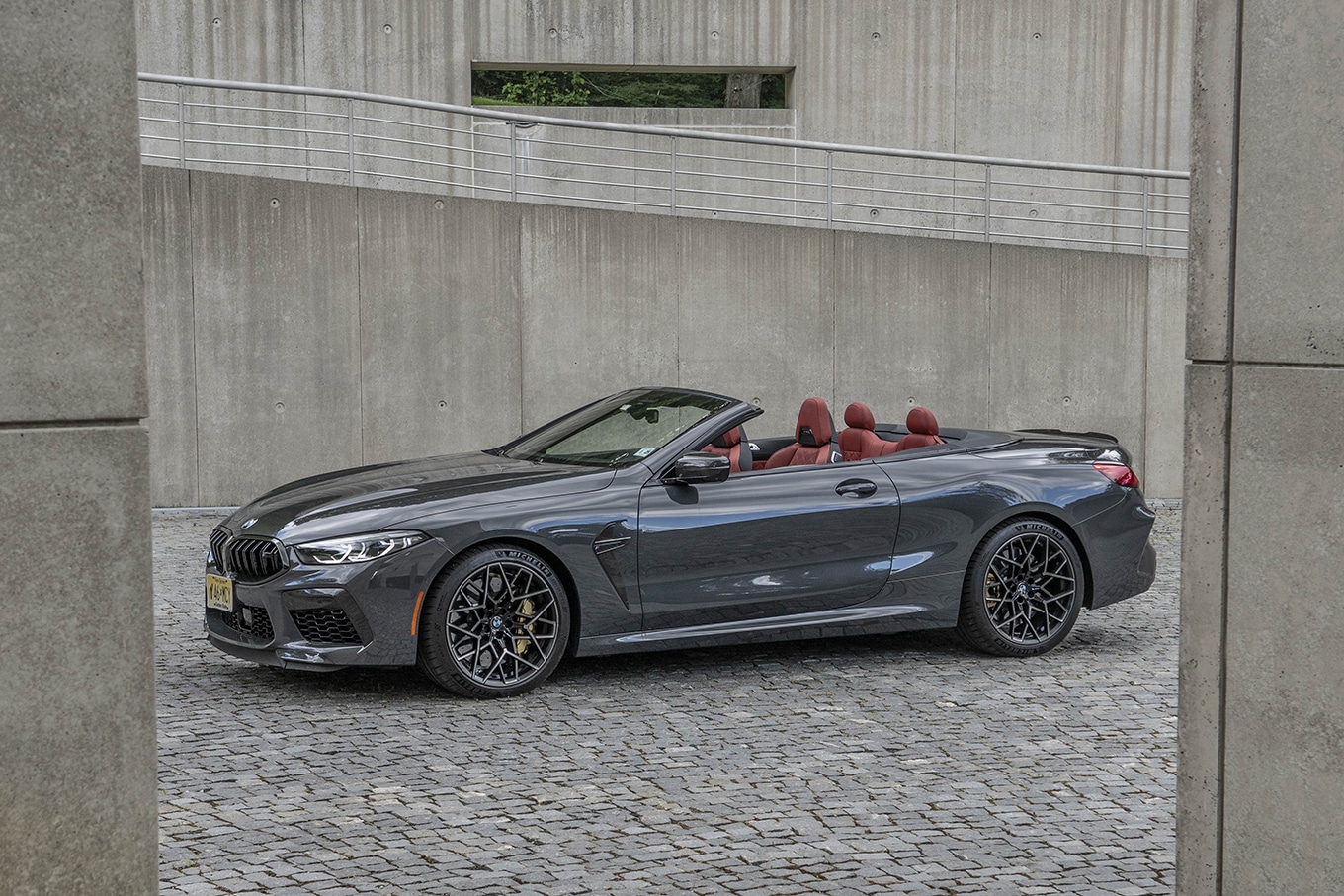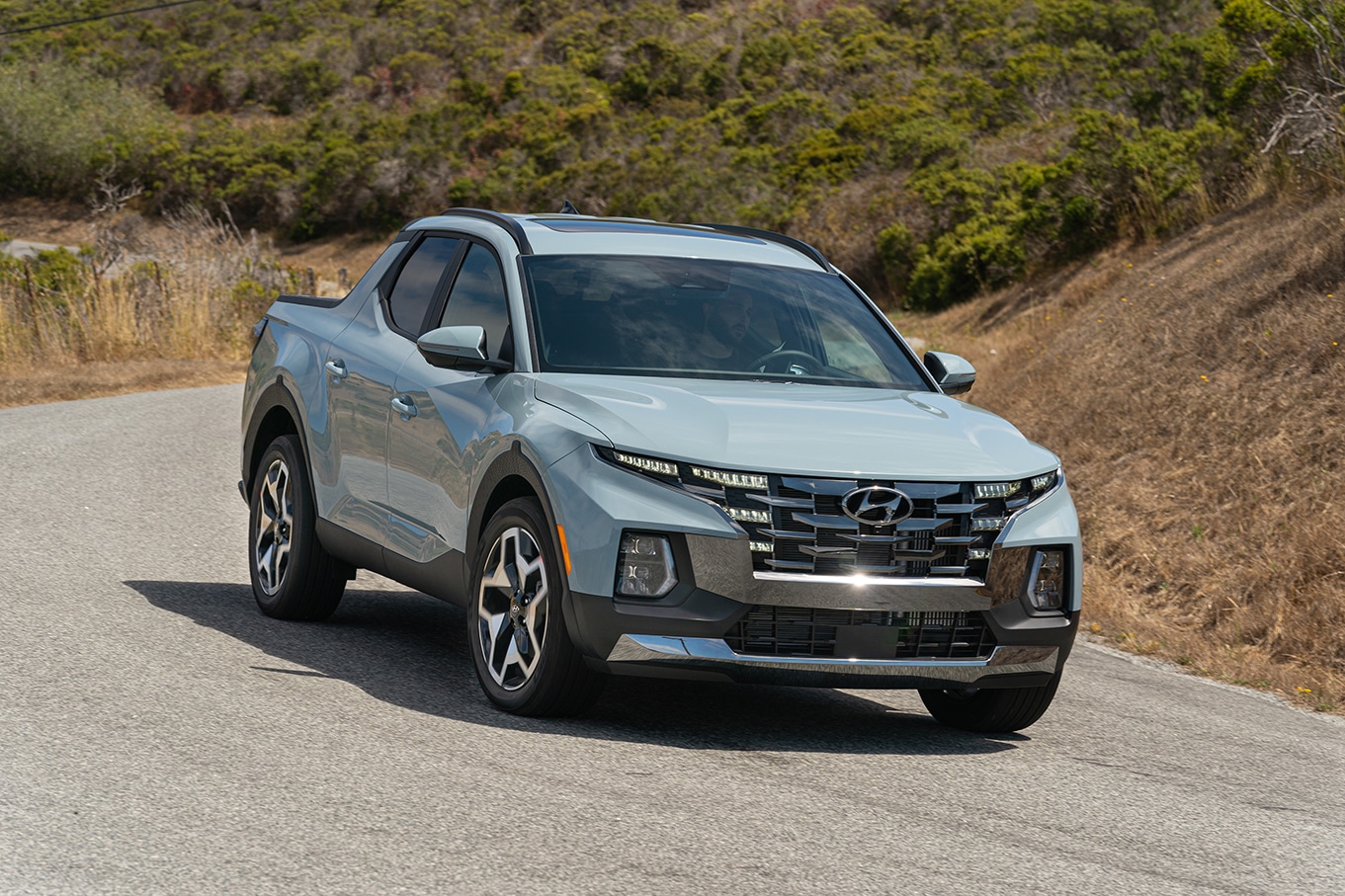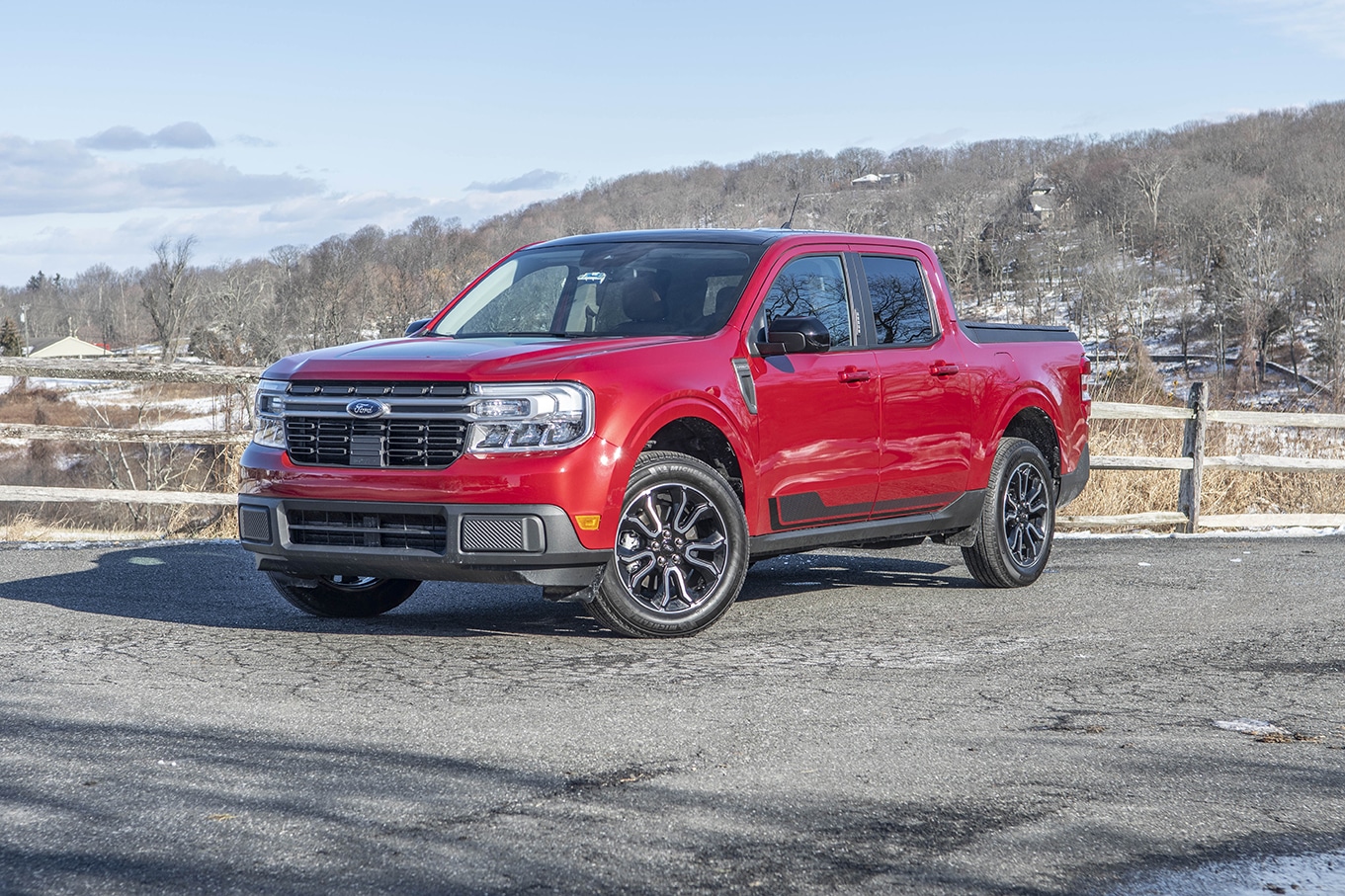BMW M8 Competition Convertible
BMW is mostly known today for a dizzying range of SUVs and prominent grills that create considerable fodder for online discussion. But going back to the 1930s, BMW was building some of the most desirable open top sports cars on the planet. They were beautiful and fast. In 1990, BMW introduced the 8 series, a new model topping their line-up, but was only available as a coupe. After a two-decade hiatus, a second generation 8 series was launched for 2019, this time in both coupe, convertible and even four door versions. Available with either rear or all-wheel drive, the new flagship grand tourer also offered BMW’s most powerful engine. With the convertible variant, BMW took a page from their glorious past, yet with the technology and performance today’s
driver seeks.
 Modern engineering and manufacturing techniques have allowed BMW to give the convertible version of the M8 the same levels of performance as its hardtop sibling. Viewed from nearly any angle, the convertible is a looker. Like most soft-top cars, the M8 is at its best with the top down. Lowering the roof can be done from inside or outside of the vehicle, the latter being a great feature for airing out the car on hot days. The easy to install wind deflector minimizes turbulence and allows for conversation without shouting.
Modern engineering and manufacturing techniques have allowed BMW to give the convertible version of the M8 the same levels of performance as its hardtop sibling. Viewed from nearly any angle, the convertible is a looker. Like most soft-top cars, the M8 is at its best with the top down. Lowering the roof can be done from inside or outside of the vehicle, the latter being a great feature for airing out the car on hot days. The easy to install wind deflector minimizes turbulence and allows for conversation without shouting.
The M8’s interior design is equally seductive, wrapped in quilted, two-tone leather, polished metal, and carbon fiber. The dash and center stack offer a clean interface to tap into the car’s deep well of performance and luxury features. Once widely derided, BMW’s latest infotainment system is much improved, allowing the driver to make selections without taking eyes off the road. BMW also takes cool weather driving to an even more comfortable level with heaters blasting warm air from outlets located just below the head rests to keep your neck toasty.
Having driven quite a few M models over the years, I approached the M8 with some skepticism. Unlike some of the M models I’ve reviewed, the ride is buttery smooth and worthy of a luxury car. Yet, when you adjust the performance settings and unleash the car’s potential, the M8 becomes a supercar. Acceleration is stunning, with 60 mph arriving in 3 seconds or less. As impressive as that number seems, the mid-range punch is even more spectacular. Step on the gas to pass another vehicle, at any speed, and the move is over in a blink. The car weighs 4,600 pounds which is a lot of weight for what is essentially a two-seater. Yes, there are seats in the back, but the legroom is so limited, most adults won’t fit. The car’s mass is always present, but the
crisp handling gives the car moves of a much smaller vehicle. Pricing starts at $140,000.
Back in the 1970s, as the fuel crisis sent Americans scrambling for more efficient vehicles, compact pickup trucks from Japanese automakers delivered a fun, yet still spartan alternative to the boring econobox. Soon, American manufacturers joined the fray and the mini-truck war was on. Cheap gas, changing consumer tastes and the explosion of the SUV left the compact truck segment all but dead by early 2000s. The small trucks that did survive grew larger leaving a big void at the bottom of the market for affordable, frugal mini-trucks.
In 2015, Hyundai garnered massive media attention when they unveiled the Santa Cruz concept, a swoopy two-door small pickup. Ford joined the party when they pulled the wraps off their own compact truck, the Maverick. While Ford’s entry was more conventionally styled, at least on the outside, they leapfrogged Hyundai on both price and fuel economy with their base hybrid model.
Hyundai Santa Cruz
 Hyundai’s four-door Santa Cruz is the company’s first pickup and it’s a good one. Built off the excellent new Tucson platform, the Santa Cruz shares its sibling’s upscale interior but offers an optional 281 hp engine from the larger Santa Fe SUV. Not surprisingly, the Santa Cruz drives like a small crossover and once underway, you easily forget there is a bed out back. That bed features a composite dent-proof surface, locking retractable tonneau cover, LED lights and a bin in the floor which has drain plugs so you can use it as a cooler for serious tailgating.
Hyundai’s four-door Santa Cruz is the company’s first pickup and it’s a good one. Built off the excellent new Tucson platform, the Santa Cruz shares its sibling’s upscale interior but offers an optional 281 hp engine from the larger Santa Fe SUV. Not surprisingly, the Santa Cruz drives like a small crossover and once underway, you easily forget there is a bed out back. That bed features a composite dent-proof surface, locking retractable tonneau cover, LED lights and a bin in the floor which has drain plugs so you can use it as a cooler for serious tailgating.
The stylish Santa Cruz is about three inches shorter than the Maverick, yet with the more powerful drivetrains, can tow either 3,500 or 5,000 pounds. Available in FWD or 4WD, all trim levels offer a payload capacity of 1,411 pounds. For those looking for a small pickup that does not look or drive like a truck, the Santa Cruz is a compelling choice. Prices start at only $24,000.
Ford Maverick
 The 2022 Ford Maverick (resurrecting a Ford car name from the past) is a four-door, five passenger compact truck that is available in either front-wheel-drive (hybrid) or four-wheel-drive (turbo 2.0 liter). The base 4-cylinder hybrid delivers plenty of power through the front wheels while returning very un-trucklike efficiency: I saw 45 MPG in my first 75 miles of driving!
The 2022 Ford Maverick (resurrecting a Ford car name from the past) is a four-door, five passenger compact truck that is available in either front-wheel-drive (hybrid) or four-wheel-drive (turbo 2.0 liter). The base 4-cylinder hybrid delivers plenty of power through the front wheels while returning very un-trucklike efficiency: I saw 45 MPG in my first 75 miles of driving!
With a starting price of only $20,000, the Maverick is surprisingly well equipped with a configurable bed that allows a wide range of uses. Ford’s interior design team nailed the Maverick with plenty of room for five passengers, easy-to-use controls, nice materials and tons of storage including a large bin under the rear seat. There are even FITS slots which allows you to add your own 3-D printed accessories. My Lariat model also included a killer B&O sound system, heated steering wheel and seats, wireless charge pad, power moonroof, WI-FI hotspot and a 400W/120V inverter plug in the bed.
So how is it at truck things? The base model has a cargo capacity of 1,500 pounds and a towing capacity of 2,000. AWD versions up that number to 4,000 pounds. Unless you really need the extra towing capacity, I recommend the hybrid. It’s rewarding to drive and delivers everyday comfort and economy car efficiency. Just throw on a set of winter tires for the snowy months and you’ll be golden. •